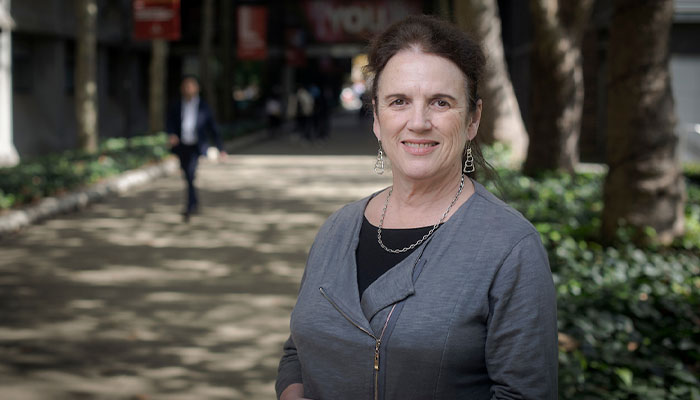News abounds of bad behaviour towards women in Australia’s Federal Parliament. It seems this one workplace has been recognised as being unsafe for women.

Enough: Protecting workers from harassment and victimisation at work should be the responsibility of employers and not individuals.
But this begs a critical question: how widespread is such bad behaviour?
While current attention focuses on the highest office in the land, it is clear from reports by statutory bodies, court and tribunal cases, and scholars, that this state of affairs is not limited to this workplace.
Unfortunately, like the 2020 Australian Human Rights Commission’s (AHRC) ‘Respect@Work’ report, knowledge about such bad behaviour receives little acknowledgement when exposed and efforts to address it have tended to be whisked off for quick fix solutions such as unconscious bias and now ’empathy’ training for staff.
Such behaviour remains prevalent despite 40 years of anti-discrimination and sexual harassment laws in Australia.
In April 2021, the Federal Government finally responded to the Respect@Work report. In this context, the Prime Minister focused on the need for awareness raising to address bad behaviour relating to sexual harassment.
However, the government’s rejection of recommendations for (i) a new regulatory model, including stronger obligations under the Sex Discrimination Act, (ii) better alignment with other employment laws, (iii) the establishment of a Workplace Sexual Harassment Council and (iv) onus placed on employers to take steps to prevent sexual harassment in the workplace, reinforces the emphasis on unconscious bias, which reinforces a focus on individuals and their mental states rather than addressing bad and discriminatory behaviour in the workplace.
Such behaviour remains prevalent despite 40 years of anti-discrimination and sexual harassment laws in Australia and enormous expenditure on raising awareness of bias through training.
As the AHRC Report suggests, the current legal and regulatory system is not ‘fit for purpose’. Nor is, in our view, unconscious bias training as a remedy for biased behaviour in the workplace.
Instead, what is needed is a new model to improve, in the words of the AHRC report, “the coordination, consistency and clarity between the anti-discrimination, employment and work health and safety legislative schemes”.
The problem with unconscious bias training
The popularity of such training arose first in the US after the concept of unconscious bias (UB) was popularised by social psychologists in the 1990s and later transfused into US discrimination law to address issues unique to US discrimination law.

Let’s workshop it: The uptake of unconscious bias training has been extensive, including by hundreds of Australian organisations.
The concept of UB, tools measuring individual levels of UB, as well as unconscious bias training (UBT) have proliferated ever since, not only in the US but in many countries including Australia.
Significantly, the uptake of the concept as an explanatory device and practical approach, has been assisted by availability of online measurement tools such as the Implicit Association Test (IAT), which purports to measure individuals’ unconscious biases. Launched in 1998, the IAT is freely accessible and promoted widely in Australia.
The uptake of UBT has been equally extensive. Besides global giants Google and Microsoft, it has been initiated in Australian organisations such as NBN Co., the AiGroup, Clayton Utz, the ABC and SBS, professional bodies, including the Australian HR Institute, the Law Council, Engineers Australia, and many universities.
UBT normalises bias, decreases guilt and avoids accusations, blame, and responsibility for biased behaviour.
An OECD survey of 431 human resources professionals in Australia found that hundreds of organisations had adopted initiatives to minimise UB with most opting for training workshops.
The goal of reducing bias is, of course, laudable but studies have repeatedly shown that UB places too much weight on individuals and their mental states and that UBT normalises bias, decreases guilt, and avoids accusations, blame, and responsibility for biased behaviour.
Importantly, in Australia, discrimination law has never required proof of an intention, motivation or consciousness to discriminate. Under federal and state laws, the lynchpin is unequal treatment rather than any mental state.

State of affairs: Professor Lucy Taksa, Director of the Centre for Workforce Futures … knowledge about bad behaviour in the workplace receives little acknowledgement when exposed, the authors say.
We argue that UB and UBT reduces organisational accountability by placing responsibility on individuals for their biased behaviour and for individuals to call it out.
As the UK House of Commons Women and Equalities Committee Sexual Harassment in the Workplace Report noted in 2018: Tthe burden of holding perpetrators and employers to account on workplace sexual harassment is too great to be shouldered by individuals alone.”
More recently in Australia, Professor Michael Leiter commented that given “real risks in calling out powerful people”, individuals are better served by doing so in a group or “having the protection of another powerful entity”.
Responsibility belongs with employers
How can these risks be overcome? Two recommendations in the UK’s Sexual Harassment Report provide guidance. One was for the Government to “place a mandatory duty on employers to protect workers from harassment and victimisation” at work and the second was for “a statutory code of practice on sexual harassment and harassment’ that ‘sets out what employers must do to meet the duty”.

Quick fixes: Professor Louise Thornthwaite, Deputy Director of the Centre for Workforce Futures … UB and UBT reduces organisational responsibility, the authors argue.
In 2020, the Australian Respect@Work report followed suit, recommending “a positive duty requiring employers … to take reasonable and proportionate measures to eliminate sex discrimination, sexual harassment and victimisation, as far as possible” and to support employer compliance with the duty through administrative enforcement powers.
Falling back on the discourse of UB, the Prime Minster said in response to Respect@Work that “sometimes the behavoiur was unconscious” and that “people will happily change their behaviour if they were aware that some of their unconscious acts could be leading to that sense of hurt or dismissal with their fellow Australians”.
This allows the Government to avoid the most crucial means for placing responsibility decisively on employers to eliminate bad behaviour in the workplace.
Professor Lucy Taksa is Director of the Centre for Workforce Futures at Macquarie Business School.
Professor Louise Thornthwaite is Deputy Director of the Centre for Workforce Futures at Macquarie Business School.
This article has been co-published with The Conversation.







